Sport shops here probably won't see much a rush on jerseys this summer, but Euro 2024 is sure to represent another bonanza for merch-makers like Adidas, Nike and Umbro.
But while national teams benefit from ever-growing demand for teamwear, it’s Europe’s big clubs that have turned the humble kit into a major revenue stream.
How much money is there in soccer jerseys?
We need your consent to load this rte-player contentWe use rte-player to manage extra content that can set cookies on your device and collect data about your activity. Please review their details and accept them to load the content.Manage Preferences
When you put Europe’s top clubs together, the figure easily slips beyond the billion euro mark each year.
That’s clear from the size of the kit deals that the big clubs have at the moment – which are worth somewhere in the high tens of millions of euro per club, per year at the moment.
Given their on-field performance over the past decade, it may be a surprise to see Manchester United at the top of the earnings tree on that front.
Its tie-up with Adidas is worth upwards of €105m per season – and can go higher depending on the main team hitting certain benchmarks (like European qualification).
Part of the reason why Man Utd are the biggest earners is because the club has built itself into such a successful brand – as a result merchandise sales have remained solid even when their team has not.
But another reason for the big number is because it’s a relatively new deal – it was only renewed last year and kicks in in the upcoming 2024-25 season.
It’s likely that it will be upstaged quite soon by Barcelona, which is said to be on the verge of a new deal with Nike.
That’s rumoured to see it spend somewhere in the region of €115m a year for the privilege of continuing its decades long relationship.
And the rumours are that could go as high as €200m a year if certain criteria is met… like a Champions League win.
But as high as those figures seem, it’s clearly worth it to sports brands. They know being connected to a big team is a guaranteed money-spinner.
Selling cheap-to-make jerseys for €100 a pop, not to mention all of the other branded merchandise sales that these deals give you access too, can be very lucrative.
And that’s not counting the marketing boost that they bring – because these brands are effectively doing a sponsorship deal as much as they are a kit supply deal.
Do clubs make money from jersey sales too?
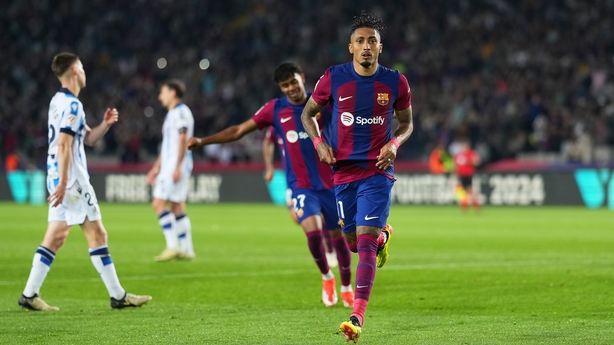
Absolutely – there’s money to be made for them on top of the fee that the kit-makers are paying for the rights.
ESPN recently parsed some data from UEFA about the finances in European soccer, combining it with what’s known about the kit deals the big clubs have.
It reckoned that Barcelona, for example, made around €179m from merchandising in 2023.
That’s merchandising as a whole – so it would include lots of products - but jerseys would be a big part of the equation given how popular (and expensive) they are.
And they’re so important to club finances that you often see them factored in to high-profile signings.
A club may be willing to pay over the odds for a Christiano Ronaldo or a Lionel Messi – even though they’re past their prime as players – because at least some of that premium will be made up for by the extra jersey sales they’ll get on the back of the signing.
Clubs keep bringing out new kits for fans to buy too…
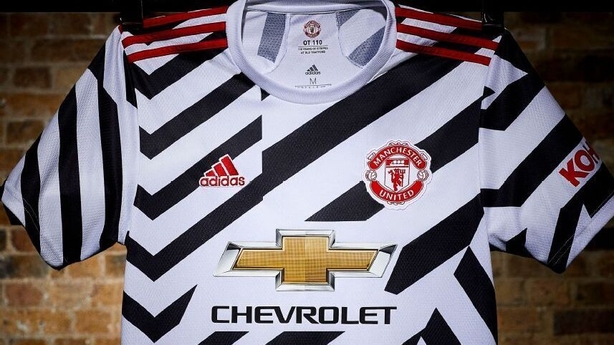
Yes – there was a time when a club would bring out a jersey every two years… or they might update the home kit one year, and the away kit on the other.
But, from the 2000s on, more and more clubs dabbled with annual kit changes and, while people grumbled, they ultimately bought more jerseys.
As a result it’s become the standard approach of all bigger clubs; really for more than a decade at this stage.
Interestingly the shift to annual kit changes came about after Premier League clubs added a pledge to their charter to limit home kit changes to every other year… that came on the back of a recommendation from a UK government initiative designed to reduce the financial pressures on fans.
The pledge was added to the Premier League charter in 2000 – but there’s no mention of it in today’s EPL handbook.
The only kit-related restriction that currently exists is a ban on clubs setting a minimum price.
As for third kits – while many will see them as another modern invention, they’ve actually been around to some degree for nearly 100 years.
That’s because the FA Cup once had a rule that, where there was a clash in teams’ jerseys, both teams had to wear their alternative kit.
The problem was that a lot of teams’ away kits would also clash with each other… and so it made sense to have a third kit just in case.
But there’s definitely been a change in approach for third kits in recent years – clubs are more inclined to do something really out-there with them in terms of design – like have them luminous pink or purple, or have a more eye-catching pattern on them, like Man United’s zebra print in 2020.
Clubs today sometimes designate their third kit as their jersey of choice for certain competitions too – like a European match – rather than just have it there for the rare occasion that the other two jerseys don’t work.
Some would argue that’s designed to give another jersey a bit more visibility, so it helps with sales.
But as if third kits weren’t enough, some clubs have now started to rollout fourth kits.
Clubs like AC Milan and Real Madrid have introduced fourth kits in the past few years – and they really have no purpose whatsoever… there’s a good chance they’ll never actually be worn by a team.
When asked about their purpose, one of the creatives in Adidas suggested that a fourth kit was a chance for them to experiment and try something that they’d never get away with in a home, away or even third kit.
Although there is a line to walk there – because if a club wants the jersey to be at least potentially usable on the pitch, it also has to follow certain rules around the number of colours, crest placement and so on.
It would make you yearn for the good old days of bulky jerseys with big collars…
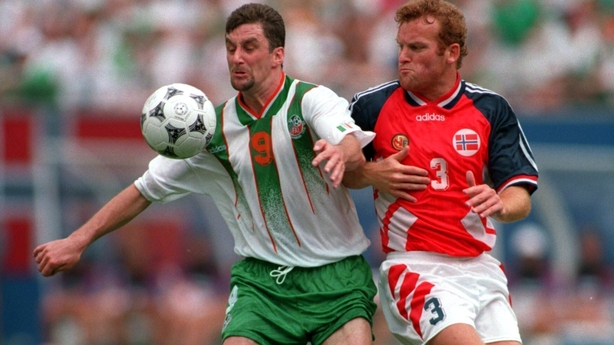
Yes, one way for fans to escape the peer pressure of having the latest and greatest kit is to get a classic one instead.
And while there’s long been a demand for retro kits, the market has really exploded in the online era.
It’s much easier now to find your favourite childhood jersey on places like Ebay or Depop or Adverts.ie.
There’s also been a growth of dedicated retro jersey websites – in some cases they buy and sell old stock of specific jerseys, while others sell new remakes of the classics.
These can be in a bit of a tricky area legally – because they often don’t have permission from the clubs in question, or the kit-makers of the time, who likely have an intellectual property claim on the design.
But, never one to miss out on a chance to sell more merch, some clubs and official kit-makers also launching retro lines of their own.
Sometimes these are reissues that coincide with an anniversary of a league win or other major event.
In other cases, you’ll see a nod to a classic jersey within the latest kit – like they go back to the old crest, or add in a design element that’s a bit of a throw-back.
What’s the appeal of retro jerseys?
Clubs have realised the same thing that people in the music industry, the film industry and TV have known for some time – and there’s now a large cohort of middle aged, middle class people with a lot of disposable income; and they love nothing more than a bit of nostalgia.
And that nostalgia can extend to the shirt sponsors too – people miss the days of having consumer brands like JVC or Nintendo on there, as opposed to the banks, high-end airlines and betting companies that sponsor clubs today.
And there were some really lovely designs in years gone by.
Nowadays jerseys are carefully crafted to maximise performance, which means they all tend to have roughly the same cut and material. That wasn’t the case in the 70s or 80s. They had a bit more character to them.
There was also a bit more variety in jersey manufacturers in previous years – back in the 80s and 90s you had the likes of Admiral, Pony, Uhlsport or Patrick (which, despite what the name would suggest, was actually a Belgian firm).
But nowadays the costs are just too big for smaller firms – so the big guys like Adidas, Nike and Umbro hold most of the market. And their designs tend to follow a similar template.
So how much can these jerseys set you back?
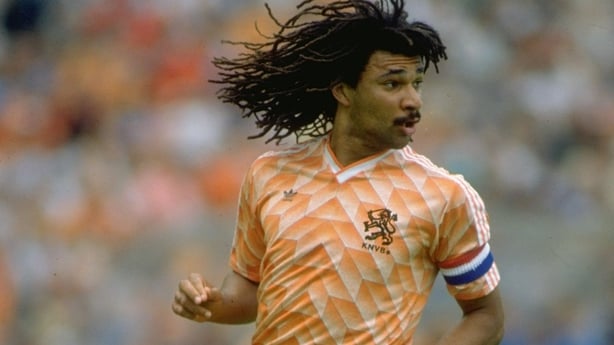
There’s two answers to that.
Because you have the original replica kits that you might be lucky enough to find online, and then you have specific jerseys worn by a big player in a historic match.
In terms of the classic replica kits – one of the most sought-after is Napoli’s 90/91 jersey – which is baby blue with Mars as the sponsor. It’s probably best remembered as one of the last club kits worn by Diego Maradona.
The suggested price tag for that jersey is somewhere in the region of €350-590.
The Netherlands’ Euro 88 jersey is also in big demand – it’s a kind of patterned orange kit made by Adidas.
That could cost you upwards of €880.
Of course with all of these you could buy modern re-makes for a lot less – though, as they’re generally unofficial, they may be hit and miss in terms of quality.
And what about the collectables…
The most expensive jersey ever sold was Maradona’s Argentina jersey from the infamous 'Hand of God’ game in the 1986 World Cup quarter final.
It was sold by former England midfielder Steve Hodge – who swapped his jersey with Maradona after the match.
It sold at auction two years ago for £7.1m.
That actually makes it one of the most expensive pieces of sports memorabilia in the world.
Interestingly the second most expensive jersey ever is another Argentina one.
Lionel Messi’s World Cup winning jersey from 2022 sold at auction last year for £6.1m.
It was one of six jerseys that he sold – with a portion of the proceeds going to charity.
Are there jerseys that are collectable for the wrong reasons?
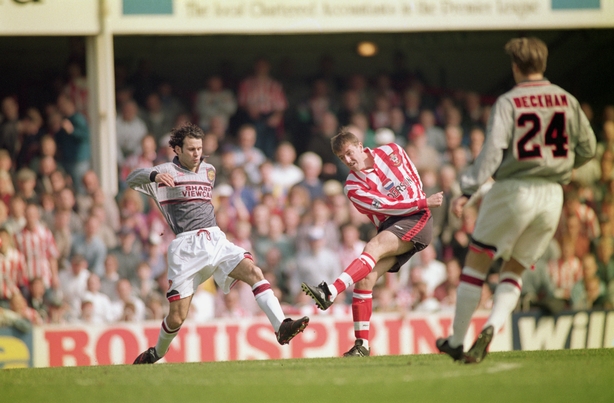
When it comes to controversial kits, you can’t escape Man United’s grey away kit from 1995/96.
The team lost four of the five games they played in it… or, more precisely, the four and a half times they played in it.
That’s because, after conceding three goals in the first half against Southampton, they decided to take the unusual step of changing kit for the second half.
Alex Ferguson claimed that the jersey caused players to blend into the crowd, so their team-mates couldn’t pick them out. The kit was never worn again.
Another howler was Fiorentina’s 92/93 away kit – which was white with purple shoulders, which had a kind of geometric pattern in it.
But, when you looked a bit closer, you could see that parts of that pattern made a swastika shape.
Fiorentina and the kit maker Lotto said the "optical effect was purely a matter of chance" – but the kit was subsequently banned, and an alternative hastily arranged.
It’s said that the players’ jerseys were destroyed – and many fans are thought to have dumped theirs too. That had the effect of making the originals even more of a collector’s item.







